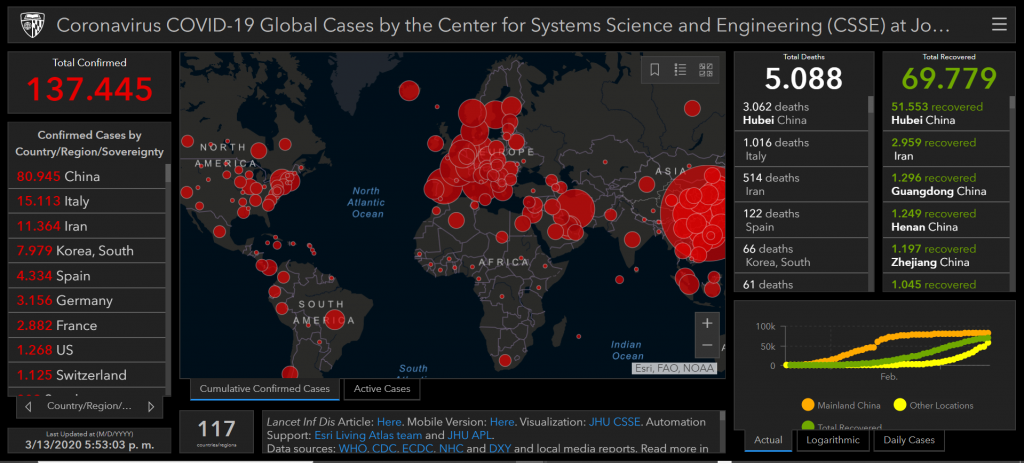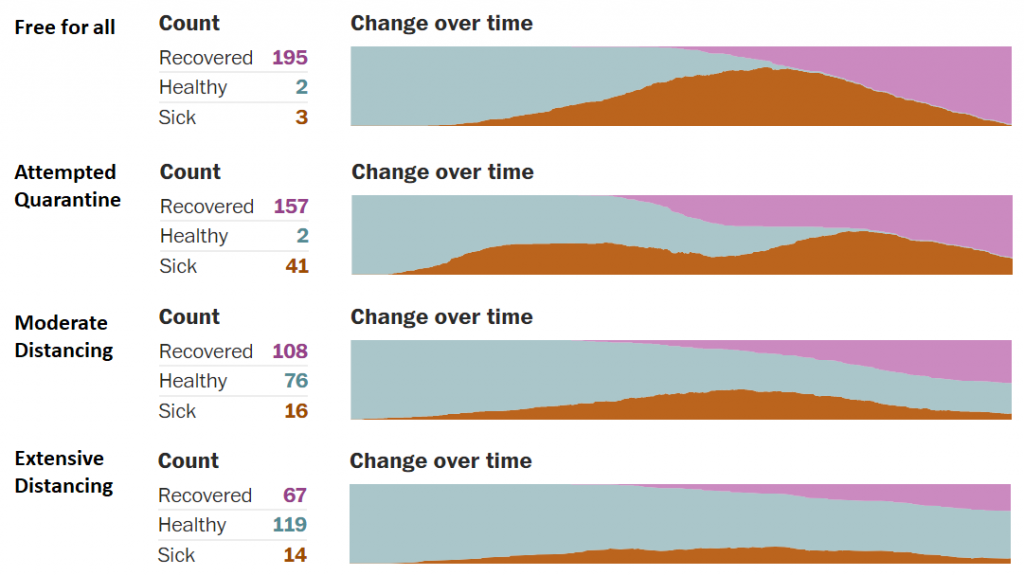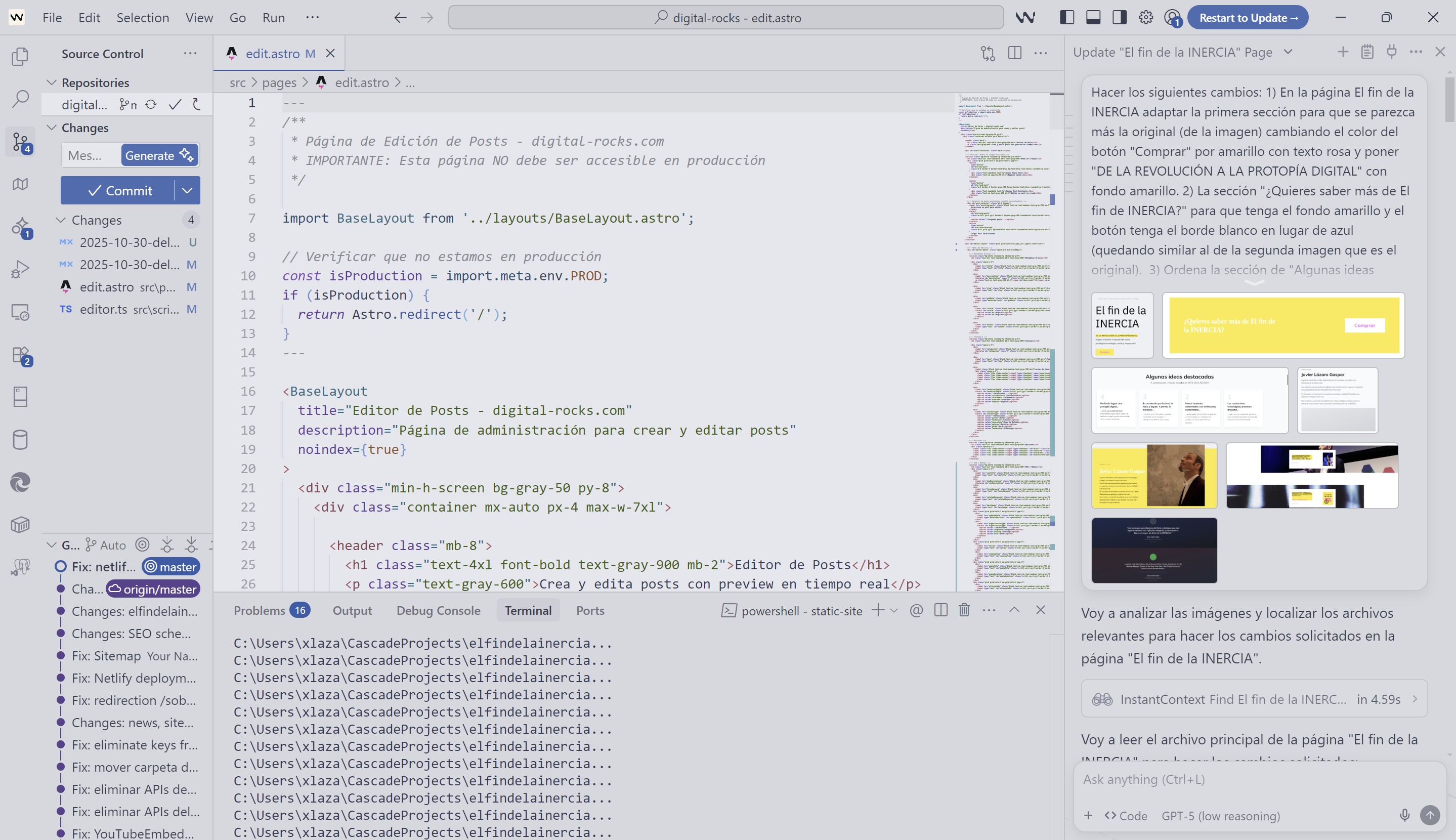Community and Technology against Coronavirus

They say that difficult situations bring out the best and worst in everyone. I believe it’s true, and in this post, I’m going to talk about the best that some makers are doing with data, technology, and ingenuity in the fight against the coronavirus.
That’s why I’m not going to talk about the healthcare teams to whom we must be grateful for giving their all. Nor about those who continue working in their vehicles, stores, call centers, cleaning services, police, etc., so that I can stay home…
In this post, I will highlight some actions launched by the technological or maker community that I find commendable.
There are many, and I have selected a few. Those that I would like to support, at the very least, by helping to spread the word as much as I can.
It’s been a while since I last wrote, but this occasion is worth it.
NOTE: Interestingly, days after publishing this post, I started to actively participate in some of them. I describe that adventure in a second part of this post: “Respirators with 3DPrinting and IoT (Community and Technology against Coronavirus part 2)”.
COMMUNITY AND TECHNOLOGY FOR ALL
After the shortage of healthcare personnel due to the disease itself, according to experts, the main problem for patient treatment is the lack of resources. That’s why numerous initiatives related to assisting patients with breathing have emerged.
Let’s start with one in Spain. Yesterday, the president of the Cotec Foundation, Jorge Barrero, announced that a group of doctors, scientists, engineers, and makers had begun working on a low-cost ventilation system for coronavirus-affected patients. Tecnalia took the lead in the challenge and started directing it.
The project’s goal is to prevent potential shortages of this type of equipment in hospitals from hindering the proper therapy for patients, thus reducing the severity of conditions and the number of deaths.
The Open Source Ventilator Project
The best part is that they are not alone in this project. Let’s head to Silicon Valley. There, a day earlier, the “Open Source Ventilator Project” was created, which already has over 1,200 members and a very active community. Their aim is also to create low-tech ventilators and openly share their designs so that the community can develop them where needed.

The challenge has also been launched on hackaday under the title: “How fast can we design and implement an open-source ventilator?”
Their intention is to have it ready in less than 2 weeks, and they are currently in the definition phase. If you believe you can contribute to the requirements, don’t hesitate to access the following document.
The Pandemic Ventilator
But there are other similar projects like “The Pandemic Ventilator”. In this case, it is a low-tech DIY medical device.
The project is older, and as its creators say:
“Many of us modify, hack, re-purpose, and DIY to save money, build something unique, create art, or show the world that there is a better way to use some device. And sometimes, just because it’s cool. This is something different. It is a ventilator, and ventilators are meant to save lives. This project is called the Pandemic Ventilator because it is meant to be used as a last-resort ventilator during a possible avian (bird) flu pandemic.”
In a post on instructables, a detailed description of the 6 steps to build ventilators can be seen, and the following YouTube video shows its operation.
Another interesting project involves over 1,000 people trying to create this type of medical equipment. It is the Project Open Air. In this case, the Project aims to find solutions for ventilators, oxygen concentrators, and other related equipment. The project is open and seeking collaborators, especially managers to help coordinate the work.
DATA AND ARTIFICIAL INTELLIGENCE APPLIED TO CORONAVIRUS CONTROL
From a data perspective, there are numerous projects. Among the dashboards created to inform us about the pandemic’s evolution, one that I like for its clarity and aesthetics is the Johns Hopkins University dashboard.
Below is a static photo of it.

Jhons Hopkins Dashboard
In addition to these dashboards, the community has created numerous algorithms that aim to predict the virus’s evolution. For example, if you search for Coronavirus on Kaggle (the world’s largest community of Data Scientists), you will find 1,622 results related to it. These projects are carried out by different professionals, students, or researchers, including datasets, visualizations, and a variety of predictive and clustering algorithms.
I would also highlight the visualizations in The Washington Post article titled Why outbreaks like coronavirus spread exponentially, and how to “flatten the curve”. Through graphical simulations, you can see the beneficial impact of “social distancing” (or #stayhome). The following graph summarizes the 4 simulated scenarios: continue activity, apply quarantine, moderate distancing (complied by 75%), and absolute distancing (100% staying at home).

But there is an initiative I haven’t found, the use of telephony data or data from GAFA (Google, Apple, Facebook, Amazon) to aid in understanding this pandemic.
Currently, mobile phone penetration in Europe is 100%, and GAFA companies use our geopositioning data in many services. Let’s not forget that in 2019, the INE bought aggregated telephony data from telecommunications companies or their analytics subsidiaries (Luca in the case of Telefónica, Vodafone Analytics in the case of Vodafone, and FluxVision in the case of Orange) to analyze citizens’ mobility patterns. While there may be limitations in bringing these analyses to real-time, I would love to hear that this data will be used to better understand the geographic spread of the pandemic and even predict it.
GRID COMPUTING TECHNOLOGY
Grid computing is another area where the community has traditionally been active, and in this emergency, it couldn’t be any different. For this purpose, a project has been created in Folding@home. It is a grid computing initiative. In this case, they propose that you donate your computer’s capacity to the Folding@home Consortium, where researchers will use it to advance the understanding of potential coronavirus medications.
To start donating part of your CPU, simply access the Folding@Home website, download the installer from the “Start Folding” tab, and follow the instructions.
OTHER TECHNOLOGICAL INITIATIVES
If you want to know about other ongoing technological initiatives, I recommend the Coronavirus Tech Handbook. It is a list of many initiatives being developed to fight against the coronavirus from a technology perspective.
It is organized by areas of interest and includes information ranging from solutions for remote work or events to hardware (medical), as well as all kinds of data solutions.
CONCLUSION
As I mentioned at the beginning, these situations bring out the best and worst in everyone. In this post, I have tried to reflect on some of the best.
Please, look into the initiatives that interest you the most and share them with your contacts. Join existing communities or create your own. Let’s do what we can to also be part of the best.
REFERENCES
If you found this interesting, I recommend reading the second part of this post: “Respirators with 3DPrinting and IoT (Community and Technology against Coronavirus part 2)”. In that post, I describe the progress of some maker respirator projects and other initiatives.
- Open Source Ventilator Project
- Open Source Ventilator Project Requirements Document
- The Pandemic Ventilator
- Project Open Air
- Johns Hopkins dashboard
- Folding@Home
- The Coronavirus Tech Handbook
- COVID-19 Open Source Collaboration JOIN ” SHARE!!!
- Scientists and entrepreneurs collaborate via WhatsApp and Twitter to devise ventilation against coronavirus - Innovators - La Razón
- Why outbreaks like coronavirus spread exponentially, and how to “flatten the curve” - The Washington Post
- Respirators with 3DPrinting and IoT (Community and Technology against Coronavirus part 2)
THE BLACK CROWES
A special group from the 90s that I will go see when the coronavirus is almost a distant memory. I’m buying the ticket this afternoon!
I leave you with The Black Crowes’ remedy: Remedy.
Related posts

From COBOL to Agentic AI: Transforming the Software Lifecycle
Evolution of the software lifecycle applying AI and Agentic AI

Digital Transformation: Beyond Technology
In Digital Transformation, purpose and culture are more important than technology itself.

BIG TECH CAPITALISM by Evgeny Morozov
'Big Tech Capitalism' shares many of the issues I describe in 'The End of Inertia' but does not approach them in the same way, as its author starts from an e...
All opinions expressed on this blog are personal and do not represent those of any company or organization with which I collaborate.


